Related Research Articles

Sinatruces was king of the Parthian Empire from c. 75 BC to c. 69 BC. Some sources indicate that he could have been a son of the Parthian ruler Mithridates I, and a half-brother of Phraates II. David Sellwood, historian, designates Sinatruces as a probably younger brother of Mithridates I. Sinatruces was succeeded by his son Phraates III.
The Kidarites, or Kidara Huns, were a dynasty that ruled Bactria and adjoining parts of Central Asia and South Asia in the 4th and 5th centuries. The Kidarites belonged to a complex of peoples known collectively in India as the Huna, and in Europe as the Chionites, and may even be considered as identical to the Chionites. The 5th century Byzantine historian Priscus called them Kidarite Huns, or "Huns who are Kidarites". The Huna/Xionite tribes are often linked, albeit controversially, to the Huns who invaded Eastern Europe during a similar period. They are entirely different from the Hephthalites, who replaced them about a century later.
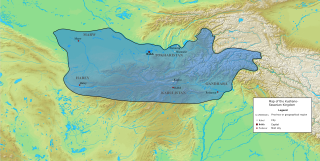
The Kushano-Sasanian Kingdom was a polity established by the Sasanian Empire in Bactria during the 3rd and 4th centuries. The Sasanian Empire captured the provinces of Sogdia, Bactria and Gandhara from the declining Kushan Empire following a series of wars in 225 CE. The local Sasanian governors then went on to take the title of Kushanshah or "King of the Kushans", and to mint coins. They are sometimes considered as forming a "sub-kingdom" inside the Sasanian Empire.
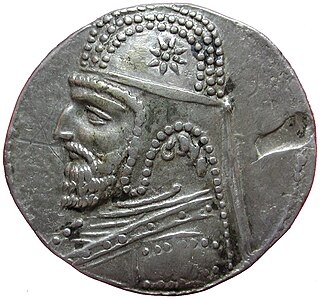
Orodes I, was king of the Parthian Empire from 80 to 75 BC. He was the son and heir of Gotarzes I. His reign is relatively obscure. His throne may have been usurped in 87–80 BC by his supposed uncle Mithridates III, however, this has found little support in scholarship. Of his military activities, it is known that Orodes I re-established Parthian rule in Elymais in 78 BC, which had been independent since 81/80 BC. Orodes I later lost the throne to the aged Parthian prince Sinatruces, who belonged to a different branch of the royal Arsacid family.

Khingila I was the founding king of the Hunnic Alkhan dynasty. He was a contemporary of Khushnavaz.

The Pāratarājas or Pāradarājas was a Hindu dynasty of Parthian kings in the territory of modern-day western Pakistan from circa 125 CE to circa 300 CE. It appears to have been a Hindu tribal polity of Western Indo-Iranic heritage.
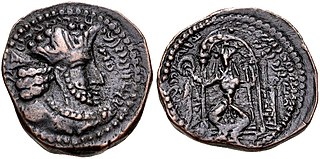
Kushanshah was the title of the rulers of the Kushano-Sasanian Kingdom, the parts of the former Kushan Empire in the areas of Sogdiana, Bactria and Gandhara, named Kushanshahr and held by the Sasanian Empire, during the 3rd and 4th centuries CE. They are collectively known as Kushano-Sasanians, or Indo-Sasanians.
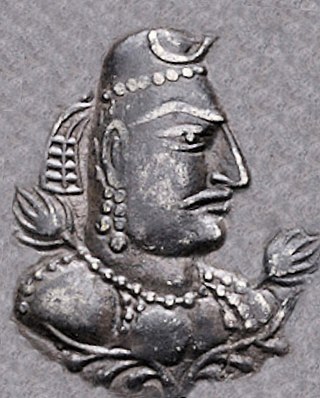
The Alchon Huns, also known as the Alkhan, Alchono, Alxon, Alkhon, Alakhana, and Walxon, were a nomadic people who established states in Central Asia and South Asia during the 4th and 6th centuries CE. They were first mentioned as being located in Paropamisus, and later expanded south-east, into the Punjab and Central India, as far as Eran and Kausambi. The Alchon invasion of the Indian subcontinent eradicated the Kidarite Huns who had preceded them by about a century, and contributed to the fall of the Gupta Empire, in a sense bringing an end to Classical India.

BahramKushanshah, was the last Kushanshah of the Kushano-Sasanian Kingdom from 330 to 365. He was the successor of Peroz II Kushanshah.

Peroz II Kushanshah was the penultimate Kushanshah of the Kushano-Sasanian Kingdom from 303 to 330. He was the successor of Hormizd II Kushanshah.

Mithridates III was king of the Parthian Empire from 87 to 80 BC. His existence is disputed in scholarship.

The Sasanian coinage of Sindh refers to a series of Sasanian-style issues, minted from 325 to 480 CE in Sindh, in the southern part of modern Pakistan, with the coin type of successive Sasanian Empire rulers, from Shapur II to Peroz I. Together with the coinage of the Kushano-Sasanians, these coins are often described as "Indo-Sasanian". They form an important part of Sasanian coinage.

The Hephthalite silver bowl is a bowl discovered in the Swat region of Gandhara, Pakistan, and now in the British Museum. It dates from 460 to 479 CE, and the images represent two different Huna tribes, suggesting a period of peaceful coexistence between the Kidarites and the Alchons.

The Fondukistan monastery was a Buddhist monastery located at the very top of a conical hill next to the Ghorband Valley, Parwan Province, about 50 kilometers northwest of Kabul. The monastery dates to the early 8th century CE, with a terminus post quem in 689 CE obtained through numismatic evidence, so that the Buddhist art of the site has been estimated to around 700 CE. This is the only secure date for this artistic period in the Hindu Kush, and it serves as an important chronological reference point.
Hind was the name of a southeastern Sasanian province lying near the Indus River in modern-day southern Pakistan. The boundaries of the province are obscure. The Austrian historian and numismatist Nikolaus Schindel has suggested that the province may have corresponded to the Sindh region, where the Sasanians notably minted unique gold coins of themselves. According to the modern historian C. J. Brunner, the province possibly included—whenever jurisdiction was established—the areas of the Indus River, including the southern part of Punjab.

The Seal of Khingila is an historical seal from the region of Bactria, on southern Central Asia. The seal was published recently by Pierfrancesco Callieri and Nicholas Sims-Williams. It is now in the private collection of Mr. A. Saeedi (London). Kurbanov considers it as a significant Hephthalite seal. It has also been considered as intermediate between the Kidarites and the Hephthalites.
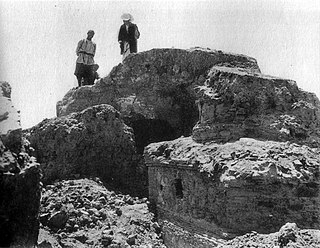
Tepe Maranjan was a Buddhist monastery, located on the eastern outskirts of Kabul, and dated to the 4th century CE, or the 6-7th century for the Buddhist phase. Many Buddhist sculptures were discovered on the site. They are made of clay, and stylistically derived from the sculptures of Hadda, but preceded the style of the Fondukistan monastery. Tepe Maranjan can be considered as representative of the Art of Gandhara of the 5th or 6th century CE.
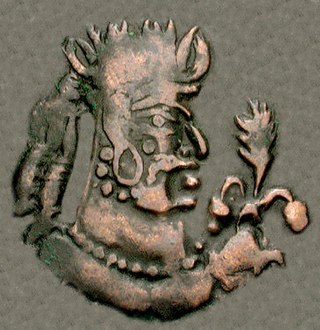
Toramana II was a ruler of the Alchon Huns in the 6th century CE.

Toramana of Kashmir, was a ruler of Kashmir in the 6-7th century CE. This ruler has often been called "Toramana II" in numismatic studies, but this name now tends to be used for an earlier Alchon Hun ruler of Kabulistan: Toramana II.

Arab–Sasanian coinage is a modern term used to describe coins struck in the style of the coinage of the Iranian Sasanian Empire (224–651) after the Muslim conquest of Persia, on behalf of the Muslim governors of the early Islamic caliphates. These coins, mostly silver dirhams but also copper coins, were struck in the historic Sasanian lands of Iraq and Iran, and continued to show the portrait of a bust of a Sasanian emperor as well as other non-Islamic motifs of Sasanian coins, alongside Arabic inscriptions.
References
- ↑ "RNS Medallist 2013: Michael Alram". The Royal Numismatic Society. 29 July 2018.
- ↑ Alram, Michael (10 February 2012). Metcalf, William E (ed.). "The Coinage of the Persian Empire". The Oxford Handbook of Greek and Roman Coinage. doi:10.1093/oxfordhb/9780195305746.001.0001. ISBN 978-0-19-530574-6.
- ↑ Traina, Giusto (25 April 2011). 428 AD: An Ordinary Year at the End of the Roman Empire. Princeton University Press. p. XIII. ISBN 978-1-4008-3286-6.
- ↑ Ellerbrock, Uwe (25 March 2021). The Parthians: The Forgotten Empire. Routledge. p. 186. ISBN 978-1-000-35852-0.